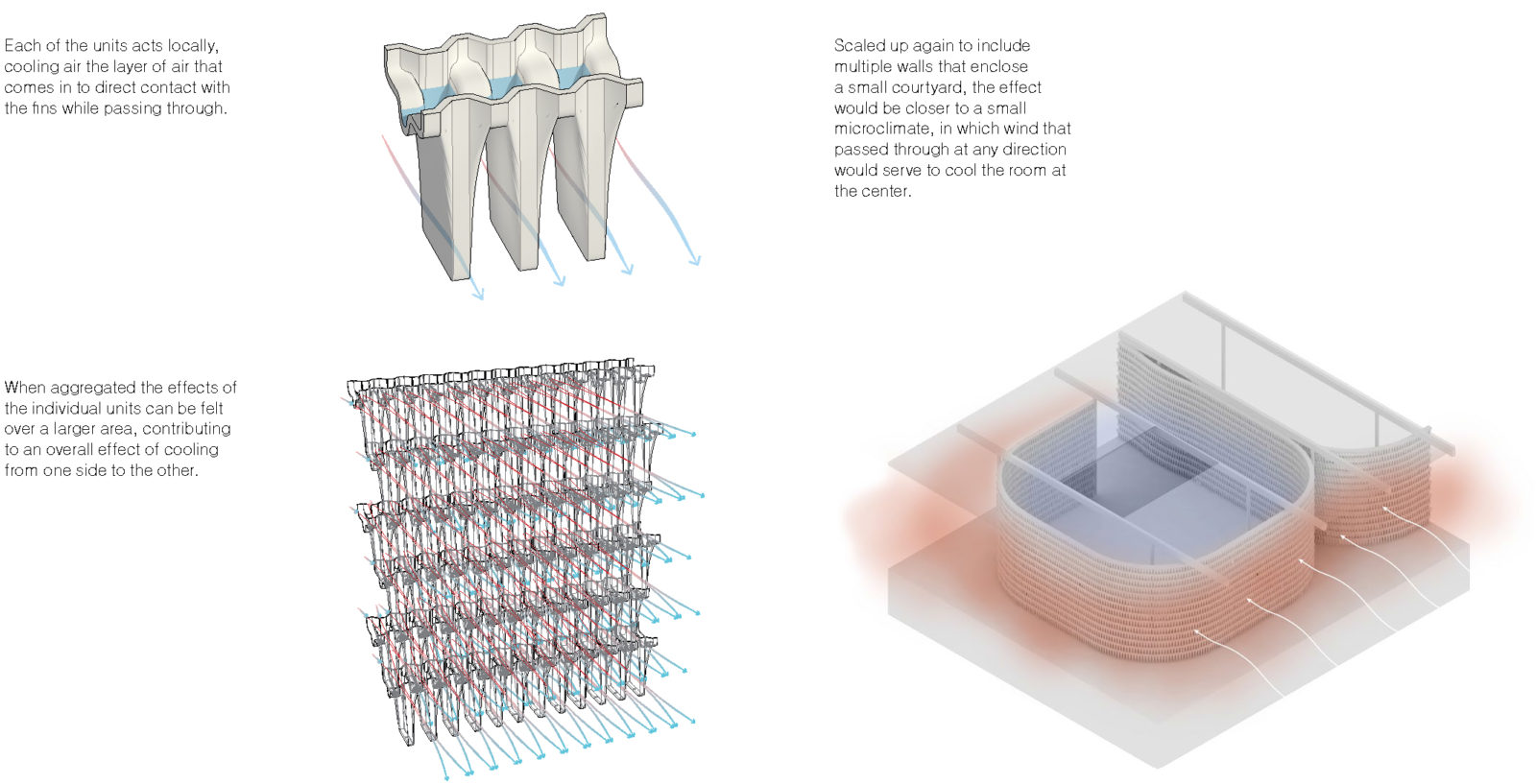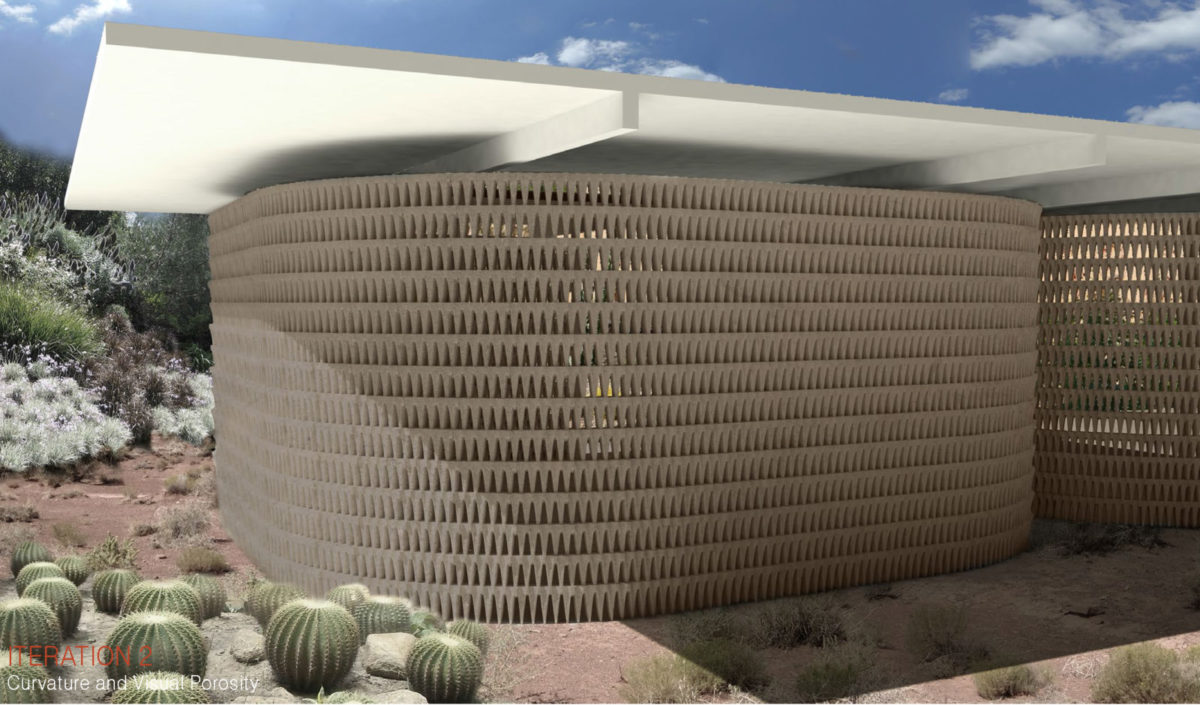Cold Spot: Evaporative Cooling through Ceramics, a research-build project that investigates passive cooling strategies developed by the multi-disciplinary team of Annapurna Akkineni (MDes EE ’16), Alexander Jacobson (MArch I ’15), Christina Papadopoulou (MArch II ’16), and Josh Schecter (MArch I ’15) won “Urban Heat Island Effect 2015,” a competition hosted by MIT Climate CoLab.
The project convinced MIT that the urban heat island effect was as much as public space problem as an environmental one. It won the popular vote unanimously and was voted one of five winners by the MIT CoLab judges.
Originally developed at the Harvard Graduate School of Design, Cold Spot focuses on the possibility of using terra cotta as a unique and inexpensive material for evaporative cooling systems. Professors Leire Asensio Villoria and Carlos Felix Raspall Galli guided the project through its conception and fabrication, while Professor Salmaan Craig and the Harvard Ceramics Lab consulted on the mechanics of evaporative cooling and the material properties of the clay.
Cold Spot, a series of screens comprised of specially designed terra cotta bricks, changes the temperature and humidity of the surrounding air through evaporative cooling. Each brick is both a well for water and a screen to allow the passage of air. Terra cotta, a uniquely porous ceramic, allows this water to pass through the wall of the brick and into the air. By allowing the water to evaporate, Cold Spot creates a cooling effect in the surrounding area. This process has been used for centuries to passively cool space, but this design pushes the possibility of ceramics as a tool to both enclose and condition space with the same system.
While it effectively mitigates the urban heat island effect, Cold Spot also has the ability to enrich the public spaces of Cambridge. It, at once, generates a cool micro-climate that encourages people to congregate, while it also becomes a unique architectural attraction that will showcase Cambridge’s commitment to environmental issues and sustainable design. As part of a growing body of research into fabrication and its effect on passive cooling systems, this pavilion could be the first of its kind to implement this new research and methodology on the scale of the city.

